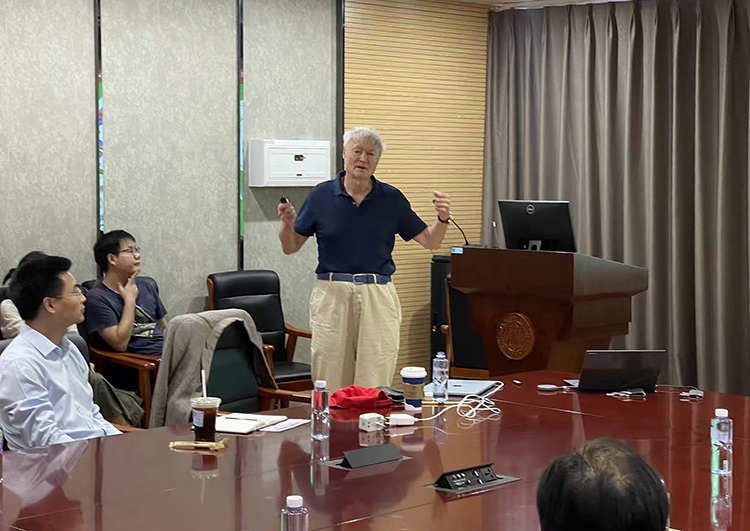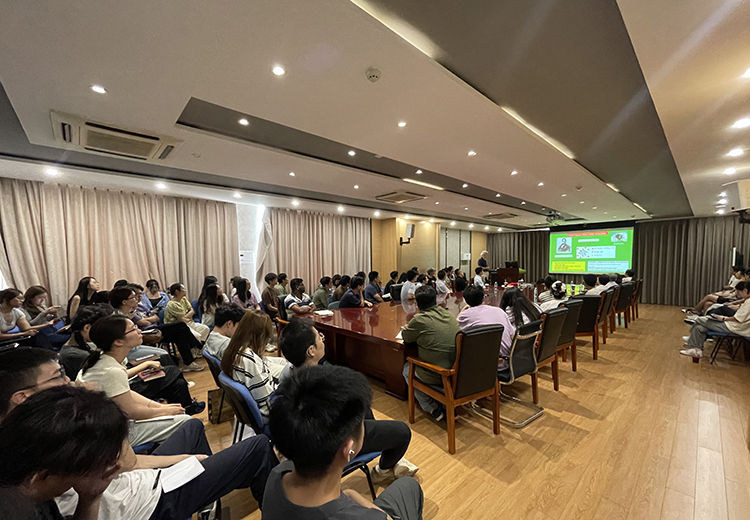CAS Foreign Member Prof. Michael Grätzel, Gives Talk on Latest Innovations in Perovskite Photovoltaic Materials at Nankai University
On September 11, Michael Grätzel, a foreign member of the Chinese Academy of Sciences, and a professor at the State Key Laboratory of Photovoltaic Materials and Cells (Nankai University), was invited to deliver a lecture entitled The Central Role of Materials Innovation in Perovskite Photovoltaic Evolution at Nankai University.

In the lecture, Prof. Grätzel stated that perovskite solar cells (PSCs) have become a disruptive technology in the photovoltaic field since their advent in 2009. In just over a decade, this technology has been hailed as a leading candidate for next-generation photovoltaic applications by virtue of its superior photoelectric conversion efficiency, low manufacturing costs, and adjustable photoelectric characteristics. However, lack of long-term stability, lead toxicity, and difficulty in industrialization remain the main challenges for its large-scale commercialization. Prof. Grätzel systematically expounded on the central role of material innovation in eliminating these bottlenecks, and introduced the latest advances in component engineering, molecular additives and passivation strategies, and interface chemistry. In the Q&A session, Prof. Grätzel had a lively exchange with faculty and students.

Michael Grätzel, of Swiss nationality, is an internationally renowned physical chemist, serving as a professor at the École Polytechnique Fédérale de Lausanne (EPFL), and a foreign member of the Chinese Academy of Sciences. He was elected a member of the European Academy of Sciences in 2012, a member of the Leopoldina in 2014, a fellow of the National Academy of Inventors in the U.S. in 2016, a member of the Swiss Academy of Engineering Sciences in 2019, a foreign member of the Chinese Academy of Sciences in 2021, and a fellow of the Royal Society in 2022. Known as the father of dye-sensitized solar cells, Prof. Grätzel has made outstanding contributions to leading-edge fields such as dye-sensitized solar cells, perovskite solar cells and solar fuels. He is a trailblazer in the research into energy-charge transfer reaction in mesoscopic systems, and successfully applied them to energy conversion systems, resulting in a number of major scientific breakthroughs. Dye-sensitized cells invented by him are widely known as the Grätzel cell, and related studies have promoted rapid developments in perovskite solar cells. Such cells boast a photoelectric conversion efficiency of over 25% within ten years, higher than that of polysilicon cells. It leads the application of mesoscopic systems in the field of solar fuel.
Prof. Grätzel has published over 1,800 papers in top international journals such as Nature and Science, with a total of 519,000 citations and a Google Scholar H-index of 315. He ranks first among the top 100,000 scientists in various disciplines, according to a global scientist ranking recently released by Stanford University. Furthermore, he holds over 50 patents and has received more than 30 important international awards, including the European Millennium Technology Prize (2000), the RSC Faraday Medal Award (2001), the Eni Award for Science and Environment in Italy (2003), the Harvey Prize for Science and Technology in Israel (2008), the Albert Einstein World Award of Science (2012), the Sheila Samson Prime Minister's Prize for Innovation in Alternative Fuels in Israel (2014), the King Faisal Prize in Saudi Arabia (2015), the Paracelsus Prize of Swiss Chemical Society (2016), the Royal Society of Chemistry’s Centenary Prize (2016), the Global Energy Prize in Russia (2017), the August von Wilhelm Hofmann Commemorative Medal of Germany (2018) as well as the Diels-Planck Medal (2020), the Al-Attiyah International Energy Awards (2023), and the Honorary Medal De scientia et humanitate optime meritis by the Czech Academy of Sciences (2024).
(Edited and translated by Nankai News Team.)









